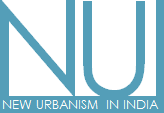New Urbanisms in India: Urban Living, Sustainability and Everyday Life (ESRC 2013 - 2016)
Principal Investigator: Dr Sophie Hadfield-Hill
India’s economic growth has been matched by rapid urban development in recent years; the urban landscape is being significantly re-modelled in line with the principles of New Urbanism – the creation of ‘walkable,’ diverse, inclusive, sustainable spaces where people will want to live both now and in the future. New large scale developments are emerging to meet the demand for housing in the Indian context.
This is a unique opportunity to gather empirical evidence of the experiences, issues and needs of residents living and moving through new urban environments. Current research into the lives of families in large scale, inclusive, sustainable communities is lacking, particularly in the emerging market context. The research is predominantly qualitative; however, an innovative mobile ‘app’ will be developed to explore family mobility.
PROJECT AIMS:
i) Investigate the everyday lives of families living within this new environment, researching their interactions, issues and experiences;
ii) Develop innovative tools for conducting community based research in rapidly-developing urban environments;
iii) Develop academic and practitioner understanding of how models of urban design are being transferred between contexts and communities.
Objective 1: Sustainable design and mobility - everyday routines, transport and access
- How has sustainable urbanism been integrated into the landscape? How are residents moving through and interacting with their new surroundings?
- What are the successes of this urban design and what are its limitations, from the perspective of the residents what lessons can be transferred to other contexts and communities?
- Focusing on children and young people, what is the scope for their mobility within the planned case study city?
Objective 2: Nature and green space in a planned city
- How are these spaces being used by children and young people and their families in their everyday lives?
- How is 'nature and the city' perceived and transferred to the emerging context of India?
- What are the child and parental concerns about risk and safety for children and young people in this new urban environment?
Objective 3: Internationalising New Urbanism
- What lessons can be learnt from applying the principles of New Urbanism to an emerging market setting? Are there examples of best practice which can be transferred to future Indian developments?
- Are there specific design features which can (or cannot) be effectively transferred between cultures and communities?


